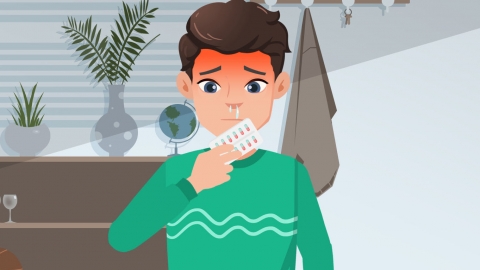Why do fingers and toes become cold during H1N1 influenza, and what should be done?
Generally, "Jia Liu" refers to influenza A. Influenza A is an acute respiratory infectious disease caused by the influenza A virus. Cold fingers and toes after contracting influenza A may result from temperature regulation responses, constitutional factors, hypotension, electrolyte disturbances, or viral myocarditis. Treatment options include general supportive care and medication under a physician's guidance. If discomfort occurs, prompt medical attention is recommended. Detailed explanations are as follows:

1. Temperature Regulation Response
Influenza A patients often experience fever. During the rising phase of body temperature, heat production exceeds heat dissipation, causing capillary constriction to reduce heat loss. This results in reduced blood circulation to peripheral areas such as the hands and feet, causing them to feel cold. It is recommended to keep warm and dress appropriately according to weather changes to avoid catching a chill.
2. Constitutional Factors
Some individuals naturally have poor peripheral circulation due to constitutional reasons. Combined with the physical weakness caused by influenza A, this makes them more prone to cold hands and feet. Blood circulation can be improved through foot baths, massage, and moderate consumption of warming-nutritive foods such as red dates and longan.
3. Hypotension
Influenza A may lead to dehydration or circulatory dysfunction, causing hypotension. Low blood pressure reduces blood perfusion to peripheral tissues, resulting in cold fingers and toes. Patients may also experience dizziness, fatigue, and palpitations. Fluid replacement is necessary to maintain stable blood pressure. When needed, medications such as midodrine hydrochloride tablets, droxidopa capsules, or theophylline sustained-release tablets may be used under a physician's guidance to alleviate symptoms.
4. Electrolyte Disturbances
Vomiting, diarrhea, and fever caused by influenza A can lead to loss of electrolytes such as potassium, sodium, and calcium. This can affect neuromuscular excitability and cell membrane potential, disrupting normal vascular constriction and dilation functions, resulting in cold fingers and toes. Accompanying symptoms may include fatigue, muscle cramps, and arrhythmias. Patients should replenish specific deficient electrolytes as directed by a physician, possibly using medications such as potassium chloride sustained-release tablets, potassium sodium citrate granules, or calcium gluconate oral solution.
5. Viral Myocarditis
Following an influenza A infection, the virus may directly invade the myocardium or damage it through immune reactions, leading to decreased myocardial contractility and impaired cardiac pumping function. This results in insufficient peripheral circulation and cold extremities. Additional symptoms may include chest pain, palpitations, and difficulty breathing. Patients should rest in bed and follow medical advice for treatment with medications such as coenzyme Q10 capsules, vitamin C tablets, and ribavirin granules.
In daily life, it is important to stay warm and adjust clothing according to weather and physical condition. Maintain a balanced diet with nutrient-rich foods to enhance the body's resistance.







